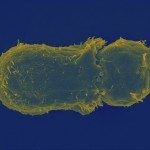Link to Pubmed [PMID] – 10384095
J. Immunol. 1999 Jul;163(1):25-31
Ligand binding to TCR induces its internalization and cell surface down-modulation. These phenomena contribute to the extinction of activation signals. Due to the multicomponent nature of the TCR-CD3 complex, its internalization may be mediated by one or several of its subunits. Although it has been reported that CD3 gamma and CD3 delta contain endocytosis motifs involved in the internalization of the TCR-CD3 complex, other subunits could also be involved in this process. For instance, CD3 epsilon and CD zeta display amino acid sequences reminiscent of internalization motifs. To investigate whether CD3 epsilon bears endocytosis signals, we have analyzed the internalization capacity of a panel of deletion and point mutants of CD3 epsilon that were expressed on the cell surface independently of other TCR-CD3 subunits. Here we report that CD3 epsilon displays endocytosis determinants. These data indicate that CD3 epsilon could contribute to the internalization and cell surface down-regulation of TCR-CD3 complexes. Moreover, the existence of endocytosis signals in this polypeptide could serve to retrieve unassembled CD3 epsilon subunits or partial CD3 complexes from the plasma membrane, thus restricting the expression on the cell surface to fully functional TCR-CD3 complexes.

